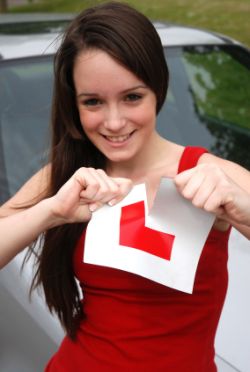Why communication matters
When you are driving, in the vast majority of occasions there will be at least a fair number of other road users on them at the same time as you. This means that they will be reacting to how YOU drive, your movements on the road and your actions.
In order to allow so many cars on the roads as there are these days, there are the many rules of the road and driving theory that you will learn for the theory test.
However, to communicate with other road users - this is predominantly done through signalling, and of course there is also the horn. It is important that you communicate accurately and correctly through these means with other road users because ultimately so doing can improve your safety on the roads, and indeed the safety of other road users around you too.
Unfortunately, not all drivers are reliable with their communication, and therefore will turn off for instance without indicating. One area where some drivers are particularly lapse is with regard to roundabouts. And whilst they might switch their indicator on to go around a roundabout, they then forget to turn off before exiting, which can be confusing for cars around them.
Therefore as useful as they are don't just rely on signals from other users - also look at their speed and road position. And particularly at potential hazardous places like busy roudabouts, allow plenty of room just in case erratic behaviour occurs around you.
Related Articles...
How to deal with bus lanes
If you see a bus lane then you will see a range of different attitudes from drivers. Mainly there will be frustration that they are stuck in a huge queue and there is a perfectly good lane that is...
Your ignition system explained
The ignition system is of course an essential part of the technology that allows cars to function, and without it you would not get very far. But what does it do? Well the system provides the...
Before Learning to Drive
The minimum age at which you are allowed to learn to drive a car on public roads is 17. As you probably know, you are not allowed to drive legally on your own until you pass your test. This means...
What to do when you sell a vehicle
When you sell a vehicle, there are some things that you have to do straight away. As soon as the vehicle is sold you have to tell the DVLA, which stands for the Driver and Vehicle Licensing Agency,...
Testing your driving ability
The driving part of the test to assess if you are safe to let on the roads is called the practical test, and it lasts in the region of 40 minutes in total. The purpose is to assess if you can drive...
What causes accidents: junctions
An alarmingly high proportion of accidents happen in and around junctions.
This is because of the combination of busy roads, traffic that can be nose to tail and people crossing all sorts of...
The automatic car explained
In most cases, you will learn to drive with a car that has gears in the United Kingdom.
However there are people who prefer to learn in an automatic car, and there are various driving schools...
What to do if horses are on the road
It may sound quite rare, but actually on country journeys you will from time to time encounter horses and their riders using the road. And you may also come across other animals too.
When you...
The multiple choice theory test
This is the first part of the theory test, and is done at a computer rather than on paper. There are many places around the country whereby you are able to take the theory test. Your driving...
What to check on your car daily
A car is a sophisticated piece of machinery, although it is commonplace and therefore taken for granted by many there are considerable elements working together to make it work.
And if one...
Back to home page of driving theory test questions

